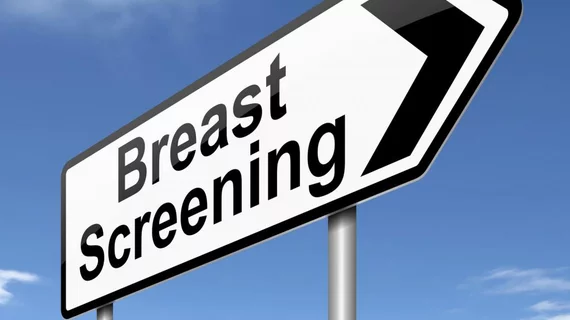Stick to breast imaging evidence, radiologists implore: ‘Lives are at stake and compromise is unethical’
A group of radiologists issued an impassioned plea recently, urging their peers to stick to the evidence when screening women for breast cancer.
The Feb. 26 Journal of the American College of Radiology commentary implored docs to begin mammography testing of women at age 40, and at annual intervals. Recommendations from healthcare administrators or other nonradiologists that say otherwise should not dictate women’s care, wrote lead author Harvard Medical School’s Daniel Kopans, MD.
“We understand administrative pressure and the rights of each of you as individuals to have your own opinions, but this is not something that is subject to opinion,” wrote Kopans, who specializes in mammography and other breast imaging, and colleagues. “Lives are at stake, and compromise is unethical. Institutions may decide on their own, but members of the ACR should stand firm and provide women with facts.”
The JACR commentary is the latest in a long-running debate over when women should begin receiving mammo screenings, and how frequently. Kopans and colleagues’ opinion piece followed another commentary published by the journal Feb. 3, along with recommendations issued by the American College of Physicians last year.
In the latter, ACP urged women at an average risk of breast cancer to begin receiving every-other-year screenings at age 50. Meanwhile, those age 40 with average risk and no symptoms should discuss the benefits and harms of mammography, the position paper noted.
Kopans and members of the ACR’s breast commission work group slammed this and similar recommendations from the American Cancer Society and the U.S. Preventive Services Task Force. The editorialists poked holes in common arguments that less frequency might reduce rates of “overdiagnosis,” noting that such claims are “not supported by the evidence.”
The team pointed to models from the National Cancer Institute, which have found that if women in their 30s wait until age 50 to receive screenings, as many as 100,000 could die from breast cancer that could have been caught earlier.
“The bottom line is that members of the ACR should support evidence-based guidelines in which most lives are saved by annual screening starting at the age of 40,” the writers concluded. “As stated in the ACR 2017 guidelines, “Weighing benefits and risks should be done by women, not for women.”

